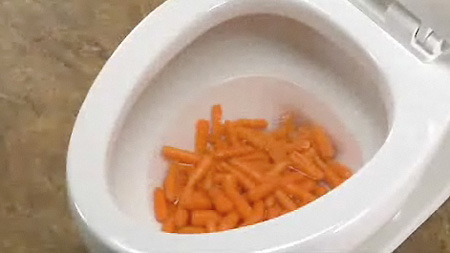Are You Permitted to Dispose of Food Waste in the Toilet?
Are You Permitted to Dispose of Food Waste in the Toilet?
Blog Article
Are you searching for additional info involving Think Twice Before Flushing Food Down Your Toilet?

Intro
Many people are commonly faced with the dilemma of what to do with food waste, especially when it concerns leftovers or scraps. One common question that emerges is whether it's all right to purge food down the toilet. In this article, we'll look into the reasons that people could think about purging food, the effects of doing so, and alternate approaches for appropriate disposal.
Reasons why people may take into consideration flushing food
Lack of recognition
Some people might not be aware of the prospective damage brought on by purging food down the bathroom. They might wrongly think that it's a safe technique.
Benefit
Flushing food down the toilet might look like a quick and very easy solution to taking care of unwanted scraps, especially when there's no nearby garbage can offered.
Negligence
In some cases, people might just pick to flush food out of sheer negligence, without thinking about the effects of their actions.
Repercussions of flushing food down the toilet
Ecological influence
Food waste that winds up in waterways can contribute to contamination and injury marine environments. Additionally, the water used to purge food can strain water resources.
Pipes concerns
Purging food can result in blocked pipes and drains pipes, creating costly pipes repairs and aggravations.
Types of food that need to not be purged
Coarse foods
Foods with coarse appearances such as celery or corn husks can get tangled in pipes and trigger obstructions.
Starchy foods
Starchy foods like pasta and rice can absorb water and swell, leading to blockages in pipes.
Oils and fats
Greasy foods like bacon or cooking oils ought to never ever be purged down the commode as they can strengthen and create blockages.
Correct disposal methods for food waste
Using a waste disposal unit
For homes equipped with garbage disposals, food scraps can be ground up and flushed with the pipes system. However, not all foods are suitable for disposal in this manner.
Recycling
Particular food product packaging products can be recycled, reducing waste and minimizing ecological influence.
Composting
Composting is an eco-friendly means to throw away food waste. Organic materials can be composted and utilized to enrich dirt for gardening.
The relevance of correct waste administration
Minimizing environmental injury
Correct waste monitoring methods, such as composting and recycling, aid decrease air pollution and preserve natural resources for future generations.
Safeguarding pipes systems
By avoiding the method of flushing food down the commode, home owners can avoid expensive plumbing repairs and maintain the integrity of their plumbing systems.
Final thought
To conclude, while it may be appealing to purge food down the bathroom for comfort, it is essential to recognize the potential effects of this activity. By taking on proper waste administration practices and taking care of food waste responsibly, individuals can add to healthier pipes systems and a cleaner environment for all.
THINK TWICE BEFORE FLUSHING FOOD DOWN YOUR TOILET IN FALLBROOK CA
Let’s be honest, we’re really supposed to be tossing rotten or leftover food in the compost bin or trash can. But many people like to place scraps of food down the drain of, say, their kitchen sink. That’s why the garbage disposal was invented: so we can continue to place certain foods down the drain without clogging our drain in the process. Smart.
But not all of us have the luxury of having a garbage disposal installed. So, you might continue to shove food down your sink drain anyway – or worse: you might flush them down your toilet! If you’re guilty of doing the latter, you’re going to want to stop, and here’s why:
Toilet Drains Aren’t Designed to Handle Food!
There’s your answer: food just doesn’t belong in your toilet. It may seem like your toilet drain is wider than the drains of your sinks, but truth be told, that isn’t actually the case. The narrower pipes of your toilet leave your plumbing at risk for clogging if you do happen to flush your food. In addition, food doesn’t break down as quickly that toilet paper and human waste do. In turn, this leaves your toilet at risk for a nasty clog.
Although a flush of a tiny pinch of food every now and then isn’t going to completely damage your toilet, there are certain foods that should absolutely not be flushed in your toilet at all. These include starchy foods like mashed potatoes, grains, hard pieces of food that are slow to break down, and fats and oils.
The latter categories of food are particularly problematic as they may harden, expand as they absorb water, break down slowly in your system, or generally create the perfect obstruction with their gelatinous composition. These are all things you don’t want in your plumbing system!
Experiencing a Toilet Clog?
Nobody’s perfect, and we all make mistakes. Sometimes one of the mistakes people make is flushing food down their toilet and later realizing that it wasn’t the best thing to do once they see that their toilet is now clogged. Uh-oh!

I'm very fascinated with Flushing Food Down the Toilet? and I really hope you appreciated the new blog entry. Sharing is caring. Helping others is fun. Thanks a lot for your time spent reading it.
Visit Report this page